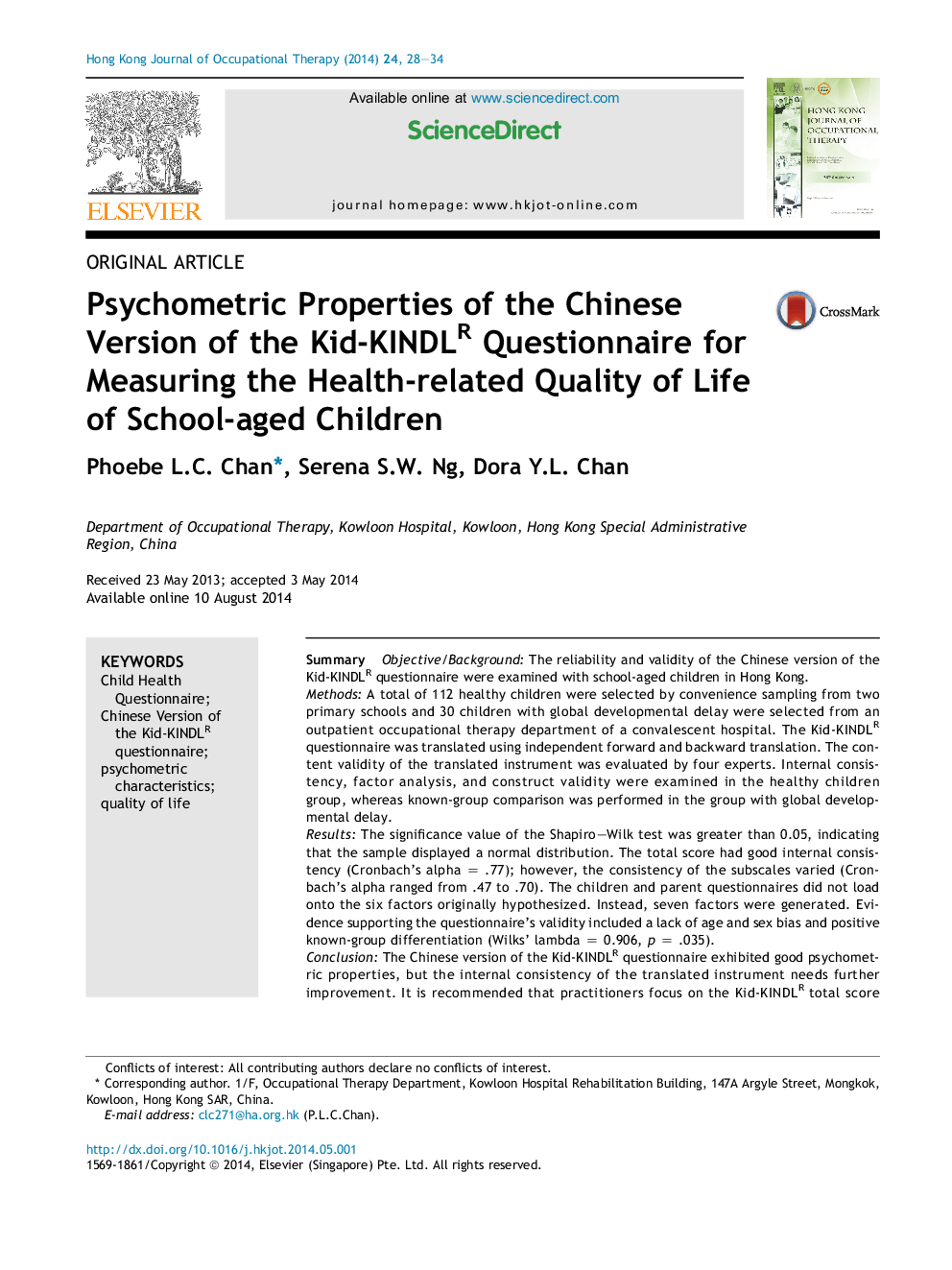| Article ID | Journal | Published Year | Pages | File Type |
|---|---|---|---|---|
| 2694728 | Hong Kong Journal of Occupational Therapy | 2014 | 7 Pages |
SummaryObjective/BackgroundThe reliability and validity of the Chinese version of the Kid-KINDLR questionnaire were examined with school-aged children in Hong Kong.MethodsA total of 112 healthy children were selected by convenience sampling from two primary schools and 30 children with global developmental delay were selected from an outpatient occupational therapy department of a convalescent hospital. The Kid-KINDLR questionnaire was translated using independent forward and backward translation. The content validity of the translated instrument was evaluated by four experts. Internal consistency, factor analysis, and construct validity were examined in the healthy children group, whereas known-group comparison was performed in the group with global developmental delay.ResultsThe significance value of the Shapiro–Wilk test was greater than 0.05, indicating that the sample displayed a normal distribution. The total score had good internal consistency (Cronbach's alpha = .77); however, the consistency of the subscales varied (Cronbach's alpha ranged from .47 to .70). The children and parent questionnaires did not load onto the six factors originally hypothesized. Instead, seven factors were generated. Evidence supporting the questionnaire's validity included a lack of age and sex bias and positive known-group differentiation (Wilks' lambda = 0.906, p = .035).ConclusionThe Chinese version of the Kid-KINDLR questionnaire exhibited good psychometric properties, but the internal consistency of the translated instrument needs further improvement. It is recommended that practitioners focus on the Kid-KINDLR total score when interpreting the Kid-KINDLR data. Overall, the study findings indicate that the Chinese version of the Kid-KINDLR is an important tool for use in clinical practice.
